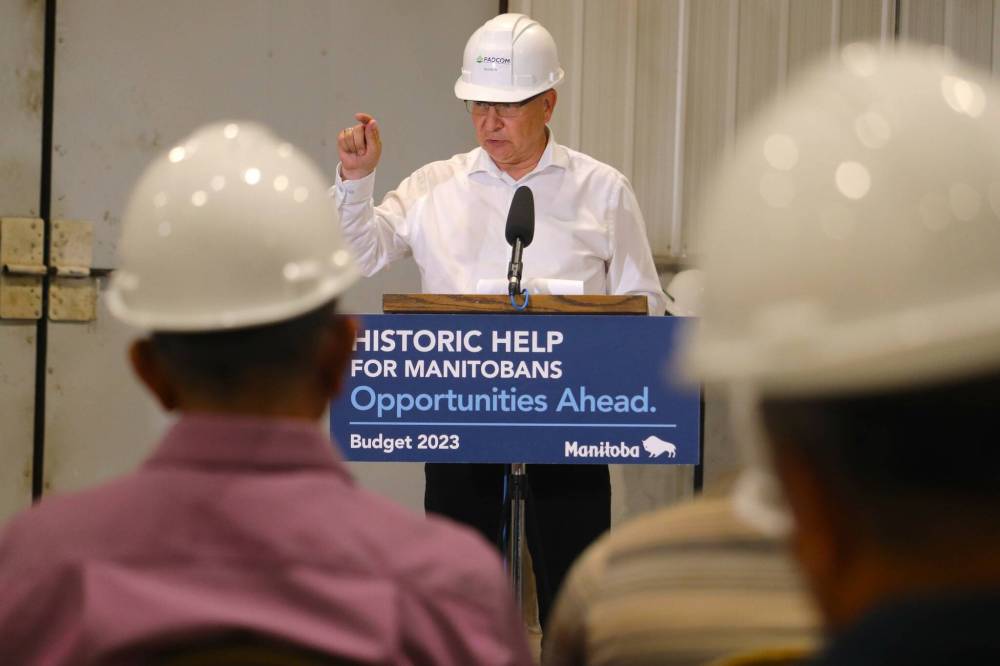A western Manitoba First Nation that had a one-fifth ownership stake in Manitoba’s first potash mine company near the town of Russell is no longer a stakeholder, the Brandon Sun has learned.
Legal counsel for Gambler First Nation confirmed the split between the band and the Potash and Agri Development Corp. of Manitoba Wednesday.
“We are no longer in that business relationship,” Milad Alishahi, a partner at law firm MLT Aikins, said.

Gambler, an Ojibwa community 190 kilometres northwest of Brandon, was a 20 per cent equity owner in the locally owned potash mine until the summer.
The mine is located in Harrowby, just west of Russell, near the Manitoba-Saskatchewan border.
Alishahi said he was unable to divulge why the business relationship had been terminated, and could not say whether the First Nation was pursuing legal action against the company.
Initially set up in 2007 as Manitoba’s first potash extraction firm after securing mineral rights, the corporation started production in June 2023. It received assistance from the Manitoba government under the Tories. It was given a short-term, $1.03-million loan for the mine. The province also granted it the right to explore for potash on Crown land adjacent to the mine.
Corporation president Daymon Guillas confirmed his company had parted ways with Gambler in August.
However, Gambler continues to be a partner in profit-sharing, along with other First Nations, including Waywayseecappo First Nation, Birdtail Sioux First Nation, Treaty 2 Territory, Treaty 1 Territory and the Manitoba Métis Federation.
Guillas said neither the company nor Gambler is pursuing legal action against each other in relation to the equity agreement.
“That would never ever happen. We are not that kind of people. We are all interested in community and relationships,” Guillas said.
“Our interest is to have as many people benefit directly and indirectly from the project and we want meaningful partnership and benefit for our Indigenous communities.”
When pressed, Guillas said he could not reveal the finer details of the partnership agreement due to non-disclosure agreements.
“Any time the Gambler First Nation would like to come back in … the door is never ever closed. I am always open to (more) investment because investment will increase our production and increase our profit-sharing and community benefits. So any investment is welcome because we can expand quicker.”
The corporation remains committed to entering impact-benefit and profit-sharing agreements with new partners, including the Métis government, he said.
“Our commitment to profit-sharing will never change and discussions are going on.”
Guillas said the split hasn’t impeded the company’s operations, stating that Gambler “would never do anything to harm the project.”
“There are other discussions that are going on, but our commitment to, ‘This is a Manitoba project and we are sharing the wealth’ is absolute, and we are in discussions under the (non-disclosure agreement) with others as well,” Guillas said.
Gambler First Nation Chief David LeDoux wouldn’t comment.
One of the main objectives of the mining project is to ensure that Westman communities directly benefit from the 250,000 to 500,000 tonnes of potash, which produces fertilizer, expected to be produced every year.
“We are building our inventory,” said Guillas, adding the mining company currently holds a licence for an annual production of 250,000 tonnes of potash.
He stated that the facility is on track to hit 80,000 tonnes per year of production.
“All our product is sold, but we haven’t delivered it yet. We still have to get it up to standard,” he said.
The company’s clients are primarily based in Manitoba, Saskatchewan and the United States.
Natural Resources Canada says the country is the world’s largest producer and exporter of potash. Its potash reserves are the largest in the world, pegged at 1.1 billion tonnes of potash (potassium oxide equivalent).
Manitoba is resource-rich in deposits of 29 of the 31 minerals listed on Canada’s 2021 critical minerals list.
— Brandon Sun